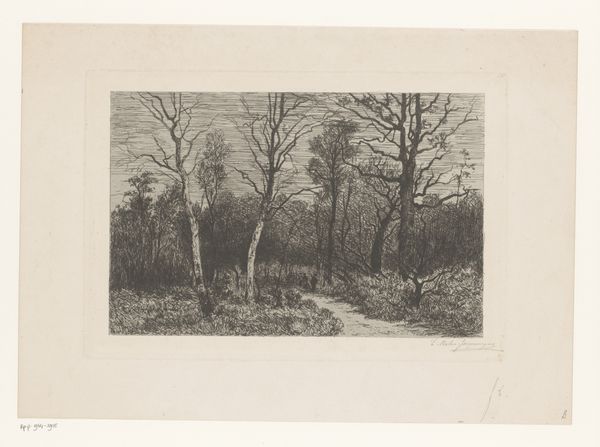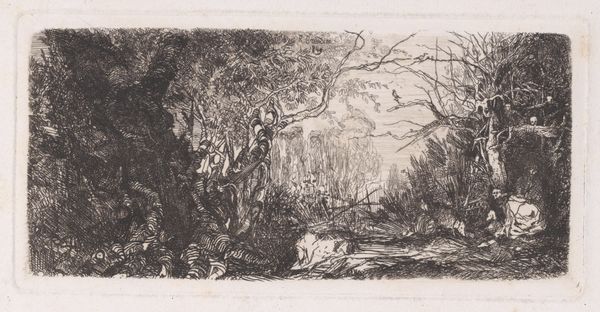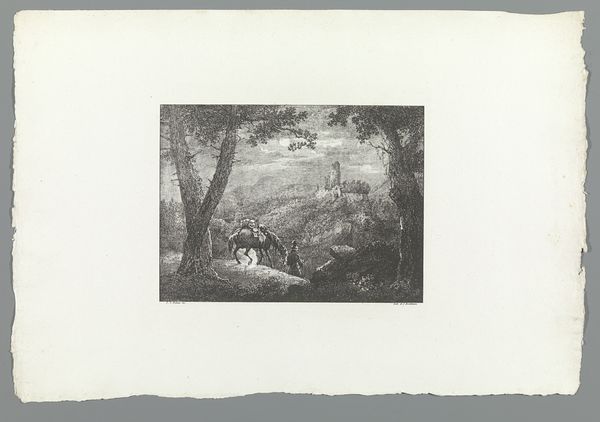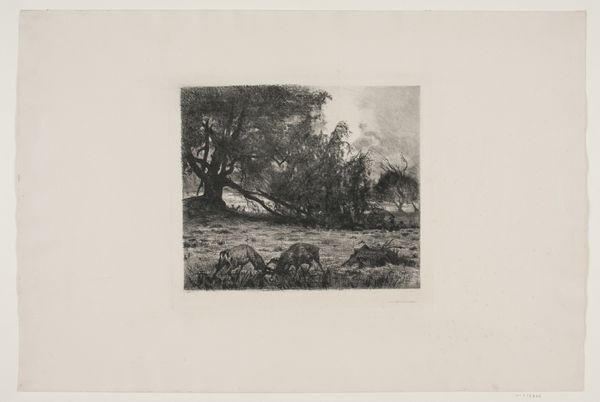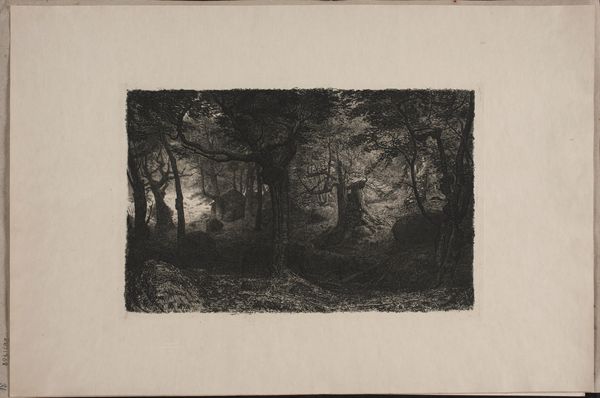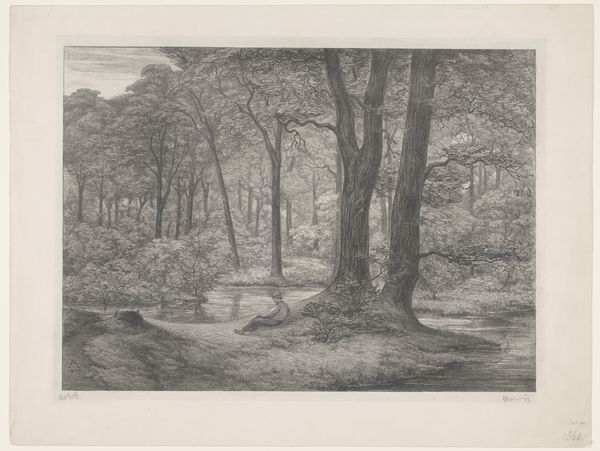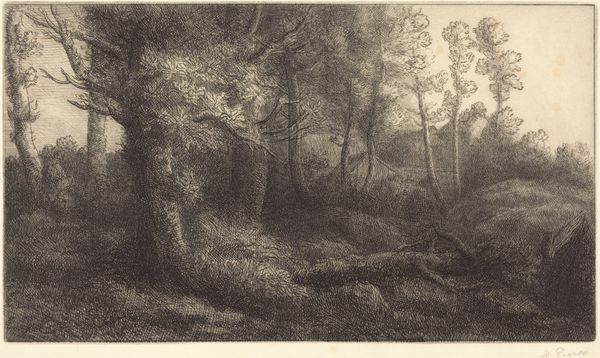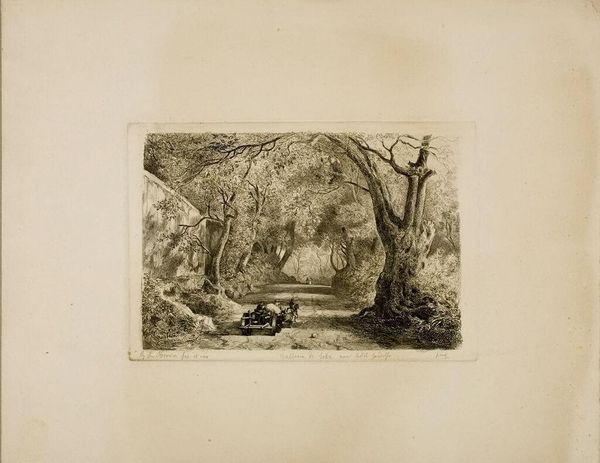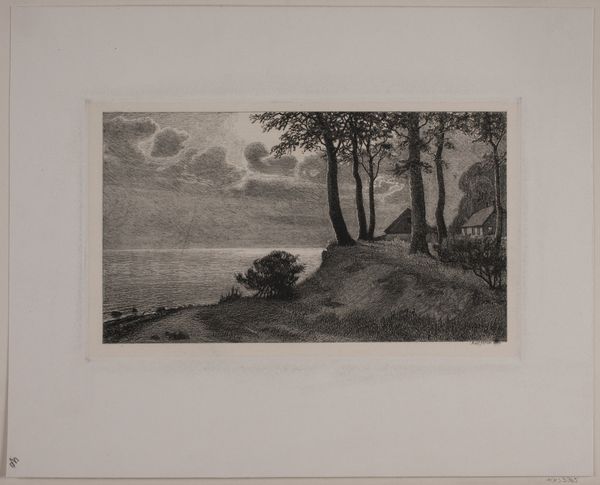
Illustration til "Snap", fortælling af H. Drachmann 1870 - 1874
0:00
0:00
Dimensions: 72 mm (height) x 101 mm (width) (billedmaal)
Editor: Here we have "Illustration til 'Snap', fortælling af H. Drachmann," made by an anonymous artist between 1870 and 1874. It's a print, an engraving showing a figure entering a dark, wooded landscape. It feels… ominous, almost like the start of a dark fairy tale. How do you interpret this work? Curator: That's a great observation! It certainly carries that weight. To me, this evokes the complex relationship between humanity and nature that defined much of Romanticism, but also the specific nationalistic anxieties of the period. Given that it illustrates a story by Drachmann, a figure known for his politically charged literature, we must consider this image in relation to themes of national identity and social change. Editor: How so? I hadn’t thought of that connection. Curator: Think of the period, the late 19th century. Many nations were grappling with defining themselves, particularly in the face of industrialization and political upheaval. Drachmann often explored the tension between rural tradition and modern progress. Do you see how this seemingly simple landscape might, in that context, represent something larger? Perhaps the uncertain path forward for a nation struggling to hold onto its past? Editor: So, the forest isn't just a forest, but a metaphor for the unknown future? Curator: Precisely. And the solitary figure could be interpreted as an individual, or perhaps even Denmark itself, tentatively stepping into that future. Consider the lack of detail, the ambiguity – does it feel more like a hopeful journey or a hesitant retreat? Editor: I think I see it differently now, not just an ominous landscape but a symbolic journey into national identity during a time of change. Curator: Absolutely! Context truly shapes the experience. Hopefully, this will guide everyone toward similar discoveries when approaching other works from the era!
Comments
No comments
Be the first to comment and join the conversation on the ultimate creative platform.

